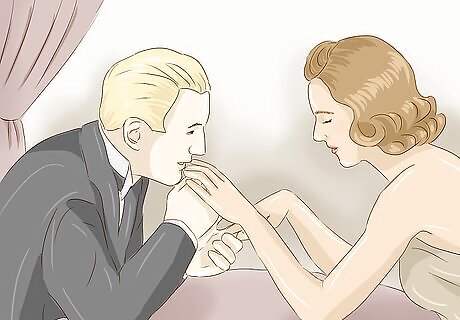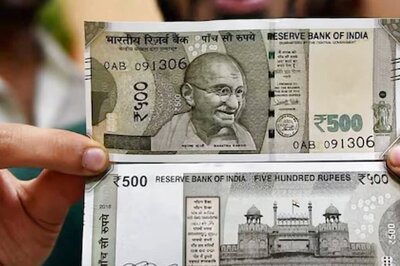
views
Brainstorming Ideas for the Novel

Use a real life romantic experience as inspiration. Draw from your own romantic experiences in life and adapt them for your novel. Fictionalize a chance encounter you had on vacation or a special moment you experienced with your partner. Use past romantic relationships as raw material for your novel. For example, you may take a passionate but doomed relationship in your past and change around real life names to fictionalize it. You may also change the setting or small details to make the situation more dramatic. You can also use the real life romances of others around you as inspiration. Maybe you have a friend who is in a stormy romance. Or perhaps you have a sibling who had a passionate relationship in the past.

Use romantic movies or television shows as inspiration. You can also reference romantic movies or tv shows that you enjoy watching. Make your own version of a romantic movie that you like. Reimagine a romance on a tv show with characters that you create or in a different setting. You can also use romantic books and songs as inspiration for your romance novel.

Create an engaging main character. Have a main character that is relatable and likeable for readers. The main character, who is usually also the narrator, should be welcoming and accessible to your audience. They should feel unique and interesting to your reader. For example, you may have a main character who is a high-profile criminal lawyer by day, and a single woman struggling to meet someone on her level at night. Or you may have a main character who is left by her husband and copes by going back to her hometown.

Focus on a particular type of romance novel. There are many different types of romance novels, from historical romance to young adult romance to paranormal romance. Decide which type you’d like to write. Choose a type that fits your story idea so you can cater to your audience. For example, if you are writing a romance set in 1930s West Virginia or during WWI, you are writing historical romance. If you are writing about a romance between a ghost and a woman, you are writing paranormal romance.

Read examples of romance novels. Get a better sense of the genre by reading romance novels that are considered successful and well done. Go to your local library or bookstore and pick up a few romance novels, such as: Outlander by Diana Gabaldon Fifty Shades of Grey by E.L. James Twilight by Stephenie Meyer Off Campus by Amy Jo Cousins The Notebook by Nicholas Sparks
Writing the Novel

Put your own spin on the romance formula. In romance, there is a tried and true formula: girl meets boy, girl loses boy, girl gets boy. To make your romance novels stand out, put your own spin or approach on the formula so your story feels fresh and engaging. You may have the girl meet a girl, or a boy meet a boy, which would fit in the queer romance genre. Or you may have the girl meet a boy in another universe or time period. Get creative and play around with the formula. You could also have the girl be of a certain race or background that clashes with the boy she falls for. Or the girl could be from a family that does not get along with the boy’s family.

Have a strong setting. Setting is a key element in a successful romance novel. The setting should be front and center throughout the story. It should dictate how the characters speak, how they interact, and how they see the world of the story. For example, you may set the novel in modern-day Savannah, Georgia, where the characters have Southern accents and the heat is unbearable in the summer. Or you may set the novel in a naval vessel in the ocean, where the characters are nauseous from seasickness and bad weather.

Create a central conflict. Romance readers love a detailed, major conflict that drives the story forward. The conflict should be believable and prevent the main character and the love interest from being together. The conflict should also be clear and easy for the reader to follow. For example, you may have a central conflict where the main character has to choose between a high stakes criminal case and her budding romance with her next door neighbor. Or you may have a conflict where the main character’s illness gets in the way of uniting with her true love.

Consider including sex scenes. Not all romance novels need to have sex scenes. If you do decide to include sex scenes in your novel, make them emotional and vivid. Avoid graphic detail or mechanical descriptions of sex. Instead, use romantic, passionate details to describe sex between your characters. For example, you may describe the setting of the sex scenes using sensory detail, such as how it smells, feels, sounds, or looks. Providing context for the sex scene can make it more emotional for the reader.

Avoid cliches. Romance writing is populated by many cliches, which are phrases that are so common they have lost meaning. If a phrase or line feels familiar to you, it’s likely a cliche and to be avoided. Create unique descriptions instead that feel specific to your characters. For example, rather than write, “he was tall, dark, and handsome,” you may write, “he was good looking in a stylish professor kind of way.”

Wrap up the novel with a satisfying ending. A good romance novel will end on a variation of “happily ever after.” Give the reader an ending that is satisfying and happy. Ultimately, your readers want to see your main character get the love they want. For example, maybe your main character and her love interest finally get together. Or perhaps your main character recovers from her illness long enough to see her love interest one last time.
Polishing the Novel

Read the novel out loud. Once you have completed a draft of the novel, read it aloud to yourself. Listen to how the novel sounds. Underline or highlight any sentences that sound awkward or unclear so you can revise them later. Check that the transitions between chapters sound smooth and fluid. You can also read the novel aloud to catch spelling, grammar, and punctuation errors. Try reading the novel slowly so you can check that each word is spelled correctly.

Show the novel to others for feedback. Ask friends, family members, and peers to read the novel and give you feedback. Show the novel to people you know who read and enjoy romance novels. Ask them if they think the novel fits in the genre and adds something new and engaging to the genre. You can also join a writing group or start your own writing group with friends so you can workshop your novel. Be open to constructive criticism from others. It will only make your novel better.

Revise the novel. Once you have received feedback on the novel, revise it until it is at its best. You may need to write multiple drafts of the novel to get it right. Keep your target audience, usually middle aged women, in mind as you revise the novel. Write for them. After you have revised the novel, you may consider sending it out to publishers so it can be read by a wider audience.




















Comments
0 comment